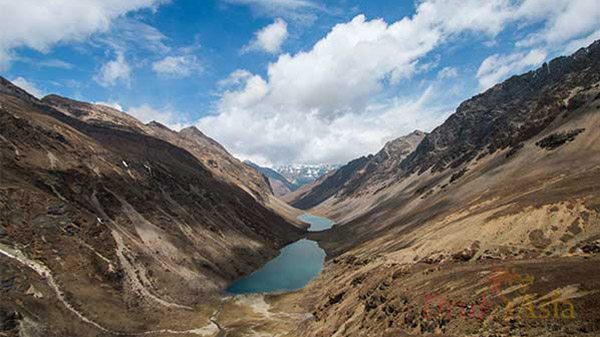A 21 days travel plan through the mesmerizing northern part of Bhutan via the Laya Gasa Trek. This is the best if you’re a walker; explore the finest things in Bhutan.
Itinerary
Day 1: Arrival in Paro, Bhutan
Welcome to Bhutan, the Land of the Thunder Dragon. Touching down at Paro International Airport, you will be greeted by your guide upon exiting the arrival hall. Today, we will take it easy to acclimatise to the altitude.
Sangaygang Drive about 15 minutes from the main city to a hillock where the Bhutan Broad Casting Tower is stationed. From there you can relish the beautiful scene of the whole of Thimphu City. On the way up or down from the hillock, you can also see Takin the national animal of Bhutan.
Buddha Point at Kuensel Phodrang will also be open to tourists once it is completed. The 169 feet bronze statue of Buddha Dordenma , Vajra Throne Buddha symbolising indestructibility will be completed soon. The Buddha statue itself is competed awaiting paintings, but visitors can drive up to the Buddha point and view the tallest statue of Lord Buddha. The view of Thimphu valley from the Buddha point is spectacular and beautiful, especially at night.
Takin enclosure – On the way to the viewpoint over Thimphu is the home of Bhutan’s national animal, the Takin; a strange looking beast some say looks like a beestung moose.
Hotels:
 Jumolhari Hotel |
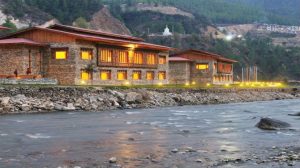 Terma Linca Resort |
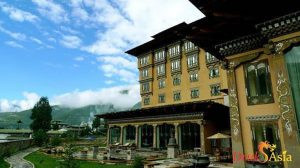 Taj Tashi Thimphu |
Day 2: Thimphu
Drubchen Festival generally include dances and this festival is dedicated to Yeshe Gompo (Mahakala) or Palden Lhamo, the two main protective deities of Drukpas (Drukpas = means people of Druk land or Bhutanese). Punakha Dromche take place in the first month of the lunar year and ends with ’Serda’, a magnificent procession which re-enacts an episode of the war against the Tibetan in the 17th century.
Heritage Museum – Dedicated to connecting people to the Bhutanese rural past though exhibition of artefacts used in rural households.
Textile Museum – Witnesses the art of traditional weaving.
Thimphu Dzong – The largest Dzong, is also the seat of the office of the King of Bhutan.
National Memorial Chorten – Which was built in honor of the late King Jigme Dorji Wangchuk.
Paper Making Factory – Witnesses the art of paper making.
Simtokha Dzong – Five miles from Thimphu, on a lofty ridge, stands Semtokha Dzong the oldestfortressin the Kingdom.
Hotels:
 Jumolhari Hotel |
 Terma Linca Resort |
 Taj Tashi Thimphu |
Day 3: Thimphu to Punakha
Dochula Pass – the 108 chortens was built by the present Queen Mother of Bhutan Ashi Dorji Wangmo Wangchuck to commemorate Bhutan’s victory over indian militant sand to liberate the souls of the souls lost
Punakha Dzong – Built in 1637, the dzong continues to be the winter home for the clergy, headed by the Chief Abbott, the Je Khenpo. It is a stunning example of Bhutanese architecture, sitting at the fork of two rivers, portraying the image of a medieval city from a distance. The dzong was destroyed by fire and glacial floods over the years but has been carefully restored and is, today, a fine example of Bhutanese craftsmanship.
Khamsum Yulley Namgyal Chorten – Built by the third Queen Mother Ashi Tshering Yangdon wangchuck this Chorten is a slpendid example of of the Bhutanese architecture and art and is the only one of its kind in the world. It has been built over eight and a half years and its details have been drawn from religious scripture.
Hotels:
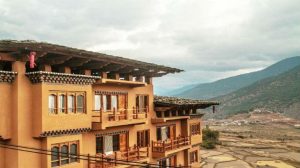 Hotel Lobesa |
 Meri Puensum |
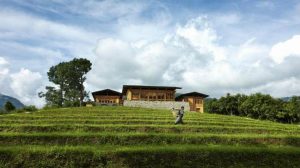 Uma Punakha |
Day 4: Tashithang to Damji
We drive to Tashithang and make our way up to Damji. We follow the Mo Chhu upwards through the heavily forested area till we reach Damji. At Damji, we camp near by the village.
Day 5: Damji to Gasa Tshechu
The path continues ascending and descending, yet again through heavily forested areas and they will be rich in wild orchids. Down by the river side is Gasa Tshechu (hot spring) and it is worth a dip since it is believed to have medicinal values. Over night at Gasa Tshechu. Take a dip and relax in one of the hot springs which is believed to have healing powers.
Distance 15 km; Duration 4-5 hours
Day 6: Gasa Tshechu
Today is the first day of Gasa Tshechu. Tshechu festivals, honors Padma Sambhawa, also known as Guru Rimpoche, the precious yogi and saint who is credited with having introduced Tantric Buddhism throughout the Himalayas. The festival’s masked dances are performed by monks clad in colorful brocade attire and permeated by chants and reading of Buddhist scripts. The culmination of festival constitutes the unfolding of a huge cloth thanka, a sacred scroll, depicting Padma Smabhawa and imagery from Buddhist pantheon.
Bhutanese people will be seen wearing their best traditional clothes and celebrating during the three day event. The Festival is very colourful and is made even more colourful by the beautiful and vibrant colored clothes that men and women wear to the festival.
Day 7: Gasa to Koina via Bale La
We begin with a gradual climb Bale La (3,740m) and then descend to Koena. We camp here for the night at our designated campsite.
Distance: 22 km; Duration: 5-6 hours
Day 8: Koina to Laya
oday we follow the Mo Chhu through heavily forested areas and then climb up to the valley of Laya. The people of Laya are famous for their vertical stripe yak hair clothing and their strange conical bamboo hats. The women wear their hair long and with great deal of turquoise and jade jewellery. Good views of the Masagang and the other peaks.
Distance: 20 km; Duration 5-6 hour
Day 9: Laya (Halt)
We have a rest day at Laya. We can spend this time scouting the area and meeting the local people and understanding their way of life.
Day 10: Laya to Limithang
We cross the river and We walk along the river, one of the tributaries of the Mochu and through a forest of rhododendron and silver fir. The trail goes uphill through a winding river valley through cedar and fir forest reaching Limithang.
Distance: 10 km; Duration: 4-5 hours
Day 11: Limithang to Robluthang via Sinche La
We climb up to the pass which is at an altitude of 5,000m and then descend to Robluthang.
Distance: 14 km; Duration: 6-7 hour
Day 12: Robluthang to Shakyapasang via Jare La
oday’s trek is a long trek of 7-8 hours. Crossing the Yarila chhu twice, following a good trail most of the time. We climb up top the pass at 4,785m and then descend down in a zig zag manner to reach our campsite.
Distance: 22 km; Duration: 7-8 hour
Day 13: Shakyapasang to Chebisa via Gombu La
Climb to Gombu La at 4,687m and make a steep descent to Chebisa. During the descent you might see herds of Himalayan blue sheep and the bearded vulture.
Distance: 17 km; Duration: 6-7 hour
Day 14: Trashigang to Bumthang
Today’s trek is the most pleasant trek of the whole trek which starts on a wide trail located high above the valley. The hillsides are partly covered with medicinal plants. Soon Lingshi Dzong can be seen and our campsite.
Distance: 12 km; Duration: 4-5 hour
Day 15: Lingshi to Jangothang via Nyile La
Today we will be crossing gorges with small river crossing after which the trail becomes easy, flat and good leading to a viewing point.
Distance: 17 kms; Time: 6 – 7 hours.
Day 16: Jangothang Halt
Most people will feel the effects of ascending different altitudes ranges, so a rest day at Jangothang will with acclimatization. There are some good day hikes from Jumolhari camp, and it is important to hike today so that you will acclimatize. Follow the standard rule : Trek high, sleep low. The area is rich in livestock, which has always been very valuable at these high places.
Day 17: Jangothang to Thangthankha
Trek to Thangthanka through the army camp. Distance: 15 Km; Duration: 5 – 6 hours.
Day 18: Thangthankha to Shana
We cross several traditional wooden bridges finally arriving at a junction enroute, where another path leads over the Tremo La to Tibet. This route was formerly used by Bhutanese people as a trading route to Tibet. The trail winds up and down along the drainage and follows the river through a heavily forested area with a few isolated farmhouses.
Distance 21 Km; Time 7 – 8 hours.
Day 19: Shana to Drugyal Dzong
This is somewhat an easy trek. Through the military camp we follow the paro river down the valley to reach Drugyel Dzong. the Drukgyal Dzong, the ruined fort, which was once defended this valley from Tibetan invasions. Mount Jomolhari, the sacred summit, reaches skyward beyond the dzong.
Distance: 14 km; Duration: 5-6 hour
Hotels:
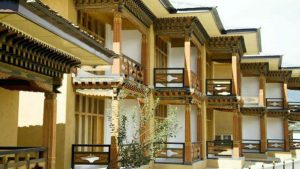 Tenzinling Resort |
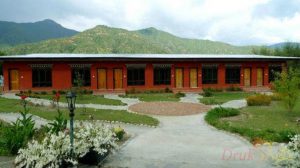 Metta Resort & Spa |
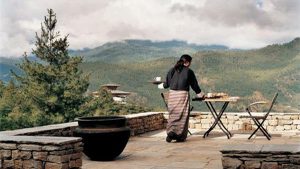 Uma Paro |
Day 20: Paro
Drukgyal Dzong – A morning drive, north of Paro valley brings us to the ruins of Drukgyal Dzong. Built in 1647 by the great Shabdrung Ngawang Namgyal, father and unifier of medieval Bhutan, the Dzong was destroyed by an accidental fire and left in ruins as an evocative reminder of the great victories it was built to commemorate.Explore the ramparts and relive the memories of a glorious past.
Taktsang Monastery – A one hour hike to the cafeteria is also a vantage view whereby you can enjoy the stunning view of the monastery. Prayer flags adorn the cliffs and this is also where Guru Padmasambhava landed on the back of a tigress in the 8th century.
Kyichu Lhakhang – After a sumptuous local lunch, we will retrace our steps to visit Kyichu Lhakhang, one of the oldest temples in Bhutan.
Day 21: Depart Paro
Today is your last morning in this mystical and memorable country of Bhutan. We will have breakfast and proceed to check in for your flight. We bid a fond farewell to Bhutan for the flight back to Bangkok. We hope you have enjoyed your trip immensely and will bring your friends to Bhutan in the future.
Planning to travel to Bhutan during a festival?
On popular dates of travel such as during festival time, flight tickets tend to get fully reserved 5 months prior. Due to limited flight and seats available, we recommend you to reserve your ticket as early as possible. You can reserve your ticket for free with us and plan your trip to Bhutan with a peace of mind knowing that you will have a spot on your flight to Bhutan.
Book Now

